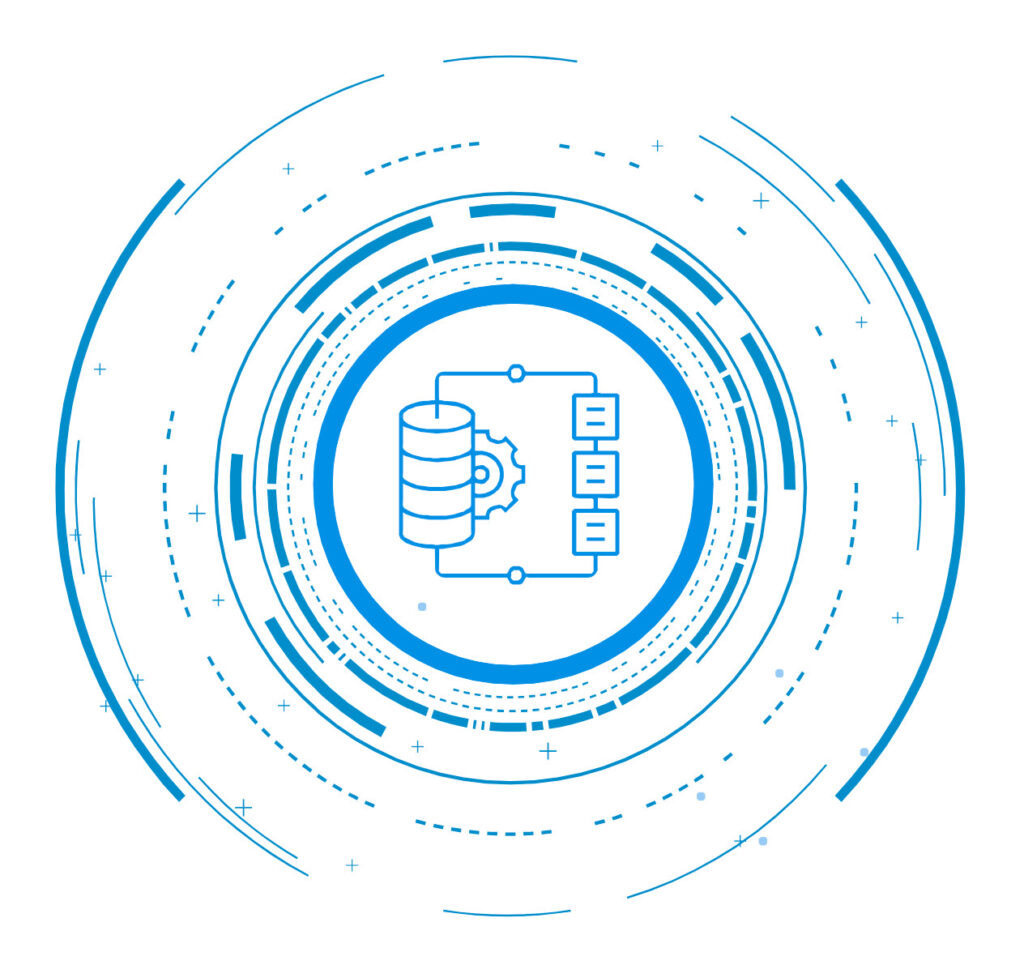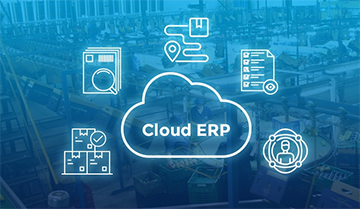Burger Consulting Group’s Comprehensive Guide to Critical Construction Technology
Process Orientation
If you’re interested in improving your processes, Burger Consulting Group (BCG) recommends that you focus on processes rather than systems. It’s been long overdue for contractors to shift their thinking in this direction. Take the time to evaluate your processes thoroughly before taking the step to automate. Look at processes from end-to-end, such as procure-to-pay or contract-to-cash. Evaluate all the steps necessary to create efficient and controlled processes. By doing so, you’ll realize that to streamline a given process, you should examine the steps involved, data movement, training, integrations, and other key aspects. Remember, technology alone won’t solve the problem. Automating one step in an otherwise interconnected process won’t necessarily get the whole job done.
Recalibrating IT
With the movement to Cloud infrastructure and solutions (SaaS) over the last ten years or so, you may find that traditional IT departments are faced with a need to change structure, makeup, and focus. The common emphasis on infrastructure is no longer as relevant as it once was. Contractor IT remains understaffed and underfunded for the job ahead, but IT also requires some rethinking in terms of the type of staff and use of outsourced resources and leveraging shadow IT.
For larger contractors, Burger Consulting Group has observed greater emphasis on IT Governance, the process of controlling IT spend, application selection and rollout, and managing enterprise applications. IT is no longer leading business transformation but instead assisting it through valuable support services, as they should be. Many contractors are also upgrading their lead IT person to function more as a Chief Information Officer (CIO) or IT Director and less as manager of infrastructure or applications.

Human Resource and Payroll
 The shortage of labor which has been an issue since we came out of the last downturn is having a dramatic effect on contractor strategy. Almost all contractors are focused on recruiting and developing their “human capital” as it is sometimes called. Contracting companies are now deploying larger Human Resource (HR) applications that include recruiting, onboarding, self-service portals, training administration, and sometimes even payroll. For Burger Consulting Group, the jury remains out on the viability of third-party payroll.
The shortage of labor which has been an issue since we came out of the last downturn is having a dramatic effect on contractor strategy. Almost all contractors are focused on recruiting and developing their “human capital” as it is sometimes called. Contracting companies are now deploying larger Human Resource (HR) applications that include recruiting, onboarding, self-service portals, training administration, and sometimes even payroll. For Burger Consulting Group, the jury remains out on the viability of third-party payroll.
Some applications are evolving to oversee construction payroll while others are getting implemented to support specific payroll functions still done within the Enterprise Resource Planning (ERP) (e.g. certified payroll reporting). This is another good example of a process area that should be evaluated holistically, from recruiting through timesheets, payment, and benefits administration. When payroll is separated from the HR application, it will require a robust integration but that today seems easier than making do with an inadequate payroll solution that requires offline calculations or a lot of clumsy data movement. Timecard solutions are being divided as well, from those that are offered as bolt-on solutions from estimating solutions to stand-alone solutions that offer biometrics, time, date and Global Positioning System (GPS) stamping, and signature capture.
Interested in a Free Technology Consultation?

Integration
We’ve observed a strong trend in the acquisition and deployment of middleware solutions such as Boomi, MuleSoft, and Ryvit. This is a class of software that has only been catching momentum over the last five years or so. This is another good example of the need to staff correctly in IT in order to support an enterprise application.
Contractors still have large-scale systems like ERP in place but now also have to contend with as many as 10 or more point solutions that need to integrate back to ERP or each other with multiple exchanges during the day. This should no longer be handled manually but rather through an automated process that is controlled and offers data transformation to ensure clean reliable movement of data. Some companies are even at the point where they are implementing Master Data Management (MDM) strategy to maintain customers, jobs, employees, and vendors in a single database and then share them to all systems that depend on those records.
Data and Analytics
The data and analytics movement remains in its early stages but gaining momentum. Contractors are realizing that when they place a business intelligence (BI) solution (e.g. Tableau, Power BI) over their existing data, they are realizing the condition of that data (i.e. inaccurate, incomplete, inadequate). A combination of their processes and current systems are not generating the kind of data necessary to get reliable analytics. The promise of machine learning use of BI will be hard to reach without better data. Another argument for middleware which is now being used to not only move data from place to place but also cleanse the data as necessary. This also represents another important change in IT, as some firms are hiring data analysts and business analysts to begin the long work of improving a firm’s data. IT is also coming to the realization that not all of their legacy solutions were built with data access in mind, finding tables with arcane naming conventions, stored procedures, and other classic challenges for data mining. But the move is on and will continue steadily over the next ten years.
ERP
The industry remains saddled with a number of legacy ERP solutions. The movement to newer cloud-based architecture is slow going as the transition from one ERP to another is painful, expensive, and often dreaded. Some classic ERP solutions are working hard to “dress up” their tech stacks and add better user interfaces through mobile applications but the underlying stack remains client server based. This is where the term technical debt is most aptly applied. This is a change contractors will be forced to make and the longer they wait, the greater that debt becomes. Contractors are truly grappling with a decision now to either implement an all-in-one fully integrated solution or consider the benefits of a more modern ERP that has a smaller but stronger footprint and allows easier integration with best-in-class point solutions. This should be evaluated carefully and thought of as a ten year+ decision.

Industry Acquisition and Investment
While not a solution trend per se, changing capital structure of construction is already having an impact and will likely continue. Capital has been flooding into the industry from publicly traded companies and private sources. There has been an unprecedented level of acquisition and startup funding from incubators, private equity firms, and even contractors with their own funding sources.
The feeling is, given the state of the industry (i.e. behind in automation, largely inefficient), there is tremendous opportunity to capitalize on this large fragmented and antiquated space we call home. This will ultimately create a marketplace with more competition, more point solutions, and some degree of risk (not all well-conceived new solutions will survive). Our traditional business partners will change as well, becoming more profit centered and costly. And services are not a priority for many of these new developers. They are more focused on product development, not deployment and will leave the implementations to the customers or third-party providers.
Trimble, Oracle, Thoma Brava, and Autodesk are good examples of the larger publicly traded firms that are purchasing firms and products at a robust rate and trying to create more value than the sum of their newly acquired products.


Estimating and Bidding
Estimating and bidding solutions have been around for a long time. Many of those solutions remain staples of the industry. However, those tech stacks, like many of their kind in the ERP space are showing their age. While highly functional, they were and often are still client server based. Moving these types of solutions to a cloud platform has proven difficult. Some new solutions are being developed for cloud deployment, but it takes a while for those solutions to catch up with the mature functionality of the existing solutions.
Digital takeoff, contractor prequalification, bid solicitation, and conceptual estimating are all adding complexity to the solution set estimating is using. Production and productivity reporting has been handled well by the estimating solutions offered to heavy civil but Burger Consulting Group has not seen the same development yet for the Mechanical, Electrical and Plumbing (MEP) contractors who also have a lot of interest in labor management.
The Best Practice Assessment Tool
Gauge where your organization stands against industry average and best-in-class contractors.
Equipment and Trucking

Heavy Civil Contractors, those that produce aggregate materials and simply those that have large fleets of heavy equipment are busy automating the management of their equipment as well as trucking and fuel management. Telematic devices have been available for a number of years now, but most contractors did not have much in the way of solutions to manage that incoming data.In the past the movement of equipment, fueling, tracking of trucking, and preventive maintenance scheduling was handled on spreadsheets, magnet boards, and pieces of paper.
Today, thankfully, we have much more automated and efficient solutions to process this data and provide visibility into equipment utilization, fuel tracking, and delivery of materials to jobs.
This includes the downstream processing of material billing, job charging and inventory control. Burger Consulting Group has evaluated both Tenna and Clue for equipment telematics and preventive maintenance management as well as integration back to the ERP. The adoption of fuel management systems is on the rise as well with the advent of solutions like FuelCloud, Gasboy and Samsara. This is a complex area and definitely benefits from an end-to-end or at least integrated strategy.
Prefabrication

Many specialty contractors, particularly those in MEP and drywall are moving quickly to develop their prefabrication capabilities. This is being driven by owners who see the value of prefabrication as well as the contactors themselves that grasp the efficiency inherent in fabricating in a controlled environment. This is impacting building information modeling (BIM), procurement, inventory control, and costing functions.
Most of today’s popular ERP solutions do not have all the necessary applications built in to manage a shopfloor’s operation. This will drive contractors to either evaluate ERP solutions that do (e.g. Acumatica, IFS, Dynamics) or find bolt-on solutions specifically made to control shop work orders, production control, logistics, and inventory management. Even General Contractors are feeling the need to develop some of their own prefabrication capabilities by doing panelization, prebuilt modular bathrooms or dorm rooms for example. This will require a greater leverage of Design for Manufacturing (DFMA) capabilities within their Virtual Design and Construction (VDC) departments.
